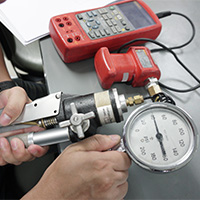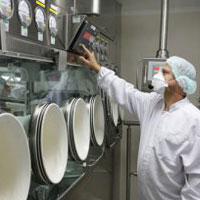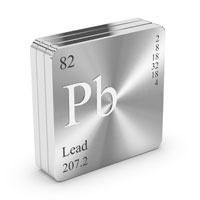 One of the most harmful and common substances to greatly affect people’s health is lead. Lead is a carcinogen which can be found in some percentage of most everyday materials. Varying forms of lead exposure can come from paint in older homes, dust, soil, and drinking water. To avoid health risk, individuals should take precautions to reduce or eliminate the possibilities of exposure. Ensuring and minimizing livestock and poultry exposure to lead contaminants helps to reduce human exposure via the food supply. Continue reading “Reducing Lead in Animal Watering Systems”
One of the most harmful and common substances to greatly affect people’s health is lead. Lead is a carcinogen which can be found in some percentage of most everyday materials. Varying forms of lead exposure can come from paint in older homes, dust, soil, and drinking water. To avoid health risk, individuals should take precautions to reduce or eliminate the possibilities of exposure. Ensuring and minimizing livestock and poultry exposure to lead contaminants helps to reduce human exposure via the food supply. Continue reading “Reducing Lead in Animal Watering Systems”
The Importance of Calibrating Measurement Instrumentation
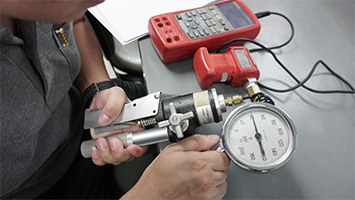 Calibrating measurement instrumentation is something that should never go overlooked. To calibrate instrumentation means to determine, check, or rectify the graduation of any instrument giving quantitative measurement. Calibrating a device ensures that the instrument will properly measure within the desired range for your application. This is important because a properly calibrated measurement device will help the user to maintain his or her system. A device can be calibrated either at the factory where the device was manufactured or within the field. Calibration certificates may be obtained once a device has been calibrated. Continue reading “The Importance of Calibrating Measurement Instrumentation”
Calibrating measurement instrumentation is something that should never go overlooked. To calibrate instrumentation means to determine, check, or rectify the graduation of any instrument giving quantitative measurement. Calibrating a device ensures that the instrument will properly measure within the desired range for your application. This is important because a properly calibrated measurement device will help the user to maintain his or her system. A device can be calibrated either at the factory where the device was manufactured or within the field. Calibration certificates may be obtained once a device has been calibrated. Continue reading “The Importance of Calibrating Measurement Instrumentation”
Explaining California’s Proposition 65
California’s Proposition 65 (Prop 65), officially known as The Safe Drinking Water and Toxic Enforcement Act, is a California law that requires manufacturers to place a warning label on any product that the State of California has found to cause cancer, birth defects, or other reproductive 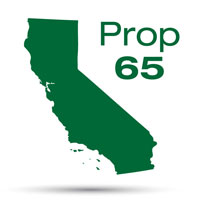 harm. This law was initially enacted in 1986 to assist Californians with making informed decisions on the products they were purchasing which might impact their drinking water. Since then the law has been extended to include all routes of contact such as eating, drinking, touching, and inhaling. Prop 65 helps consumers stay informed with what chemicals they are in contact with. The basic premise required products to have warning labels; however, products can vary in their use, consumption and how they come in contact with people. For example, a Prop 65 warning may be listed on something simple like a food storage container in restaurant or a more complex product such as a pressure transmitter used to measure water pressure in a municipal drinking system.
harm. This law was initially enacted in 1986 to assist Californians with making informed decisions on the products they were purchasing which might impact their drinking water. Since then the law has been extended to include all routes of contact such as eating, drinking, touching, and inhaling. Prop 65 helps consumers stay informed with what chemicals they are in contact with. The basic premise required products to have warning labels; however, products can vary in their use, consumption and how they come in contact with people. For example, a Prop 65 warning may be listed on something simple like a food storage container in restaurant or a more complex product such as a pressure transmitter used to measure water pressure in a municipal drinking system.
How the Sensor Market is Championing the Internet of Things (IoT)
 The Internet of Things (IoT) is the concept of creating a large network of devices that all interact with each other to ultimately change the way we live and work. By connecting our phones, cars, and other devices to this network and linking them together with shared data/services, we have the potential to revolutionize the way we do everyday tasks. This innovation is at the root of ideas like autonomous vehicles and smart cities that improve efficiency and simplify complicated systems. From an industrial standpoint, the IoT can be applied anywhere from the factory to agricultural fields and offers the opportunity to place all the steps in a process onto an automated course held together by the overarching Internet. Continue reading “How the Sensor Market is Championing the Internet of Things (IoT)”
The Internet of Things (IoT) is the concept of creating a large network of devices that all interact with each other to ultimately change the way we live and work. By connecting our phones, cars, and other devices to this network and linking them together with shared data/services, we have the potential to revolutionize the way we do everyday tasks. This innovation is at the root of ideas like autonomous vehicles and smart cities that improve efficiency and simplify complicated systems. From an industrial standpoint, the IoT can be applied anywhere from the factory to agricultural fields and offers the opportunity to place all the steps in a process onto an automated course held together by the overarching Internet. Continue reading “How the Sensor Market is Championing the Internet of Things (IoT)”
The Operation of Gages and Switches in Hazardous Environments
In many industrial processes, the materials and the end product or by-products 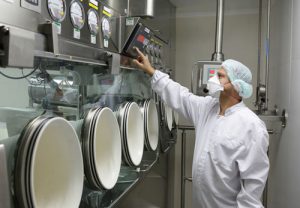 of the process, such as dust or vapors, can create conditions for a hazardous environment. Processes that have potential for hazardous environments include: water treatment, oil drilling, gas and chemical processing, power generation, pharmaceutical, and food manufacturing. The measurement and control of these processes are essential in maintaining optimal conditions of the manufacturing system and preventing catastrophic events. Continue reading “The Operation of Gages and Switches in Hazardous Environments”
of the process, such as dust or vapors, can create conditions for a hazardous environment. Processes that have potential for hazardous environments include: water treatment, oil drilling, gas and chemical processing, power generation, pharmaceutical, and food manufacturing. The measurement and control of these processes are essential in maintaining optimal conditions of the manufacturing system and preventing catastrophic events. Continue reading “The Operation of Gages and Switches in Hazardous Environments”

